Trend trading strategies: a beginners’ guide

What is trend trading?
Trend trading is a strategy that involves using technical indicators to identify the direction of market momentum. It is based on the idea that markets have an element of predictability, so by analyzing historical trends and price movements, a trader will be able to forecast what could happen in the future.
Trend trading is usually considered a mid to long-term trading strategy, but it can in theory cover any timeframe, depending on how long the trend lasts. It is usually adopted by traders who prefer a position trading or swing trading style. Position traders are those who will hold a trade for the entirety of the prevailing trend, ignoring day-to-day fluctuations, while swing traders are those who will identify a trend and ride it from start to finish.
How to identify a trend
Trend trading strategies are designed to help you identify trends as early as possible and exit the market before they reverse. Both the opening price and closing price, plus the trading range of every individual candle provide traders with a wealth of information that can be used to identify the ebb and flow of the trend.
Broadly speaking, there are three types of primary trend: uptrends, downtrends and sideways trends.
When a market price is increasing in value, it is called an uptrend. A trader seeking to take advantage of these movements would enter a long position when the market is reaching increasingly high price levels. For example, if a company’s share price increases by 100p, then declines by 50p, then rises by 110p and falls by 40p, it would be said to be in an uptrend as it is making higher highs and higher lows.
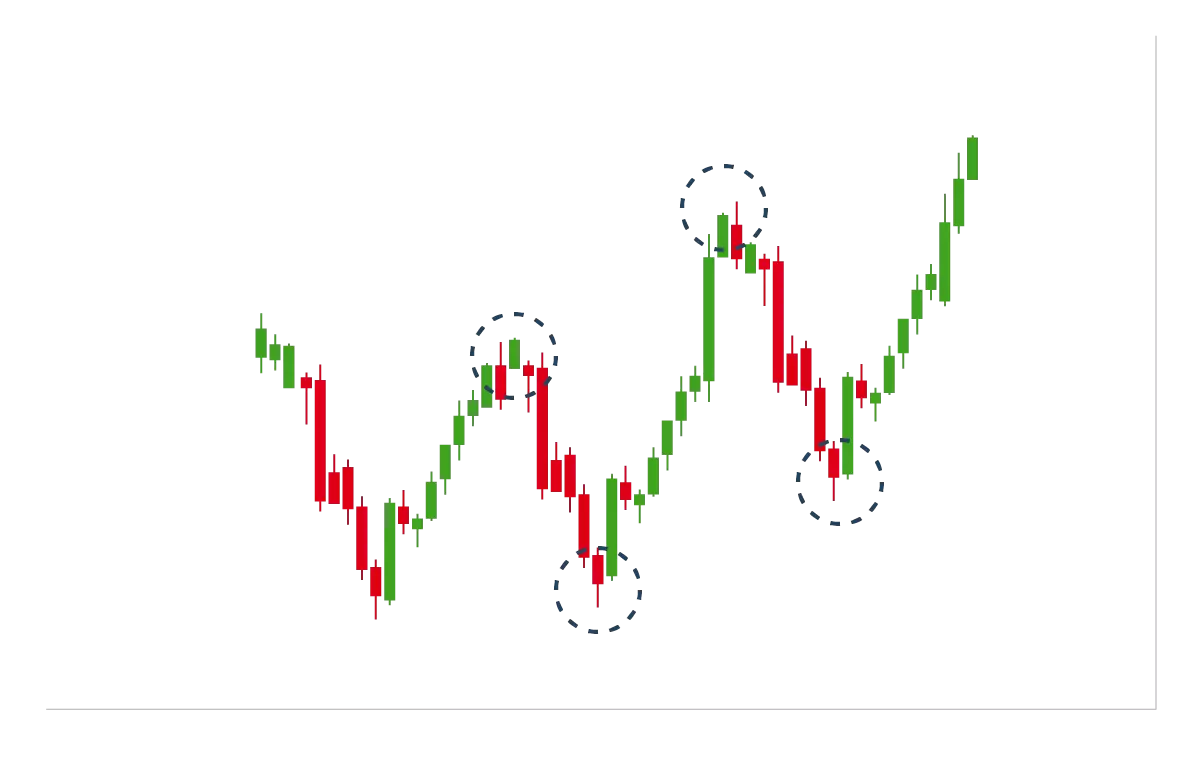
When a market price is decreasing in value, it is said to be in a downtrend. A trend trader would enter a short position when the asset is falling to lower price points. For example, if a stock decreases in price by 200p, then increases by 100p, falls again by 300p and rises by 50p, it would be in a downtrend. This is because it is falling to lower lows and lower highs.
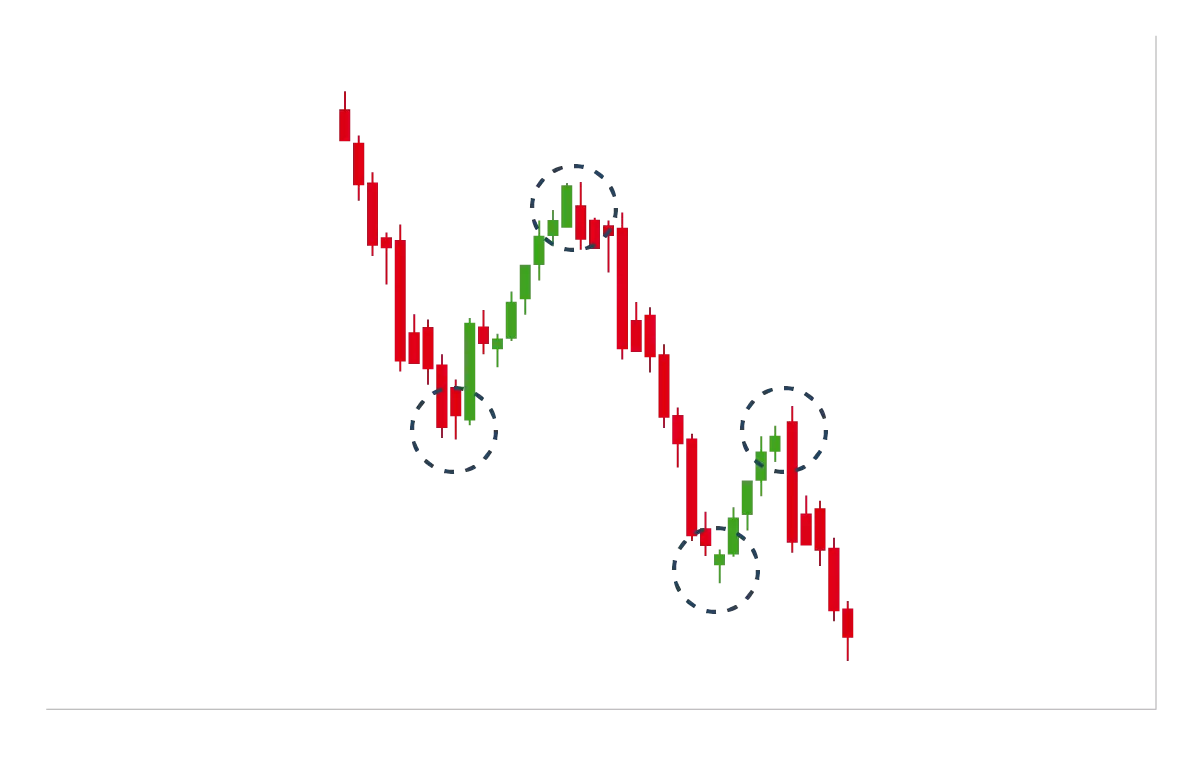
When a market price is neither reaching higher price points or lower ones, it is said to be in a sideways trend. Most trend traders will not take note of these trends, but range traders or scalpers – who seek to take advantage of extremely short-term market movements – will look out for these bounded movements.
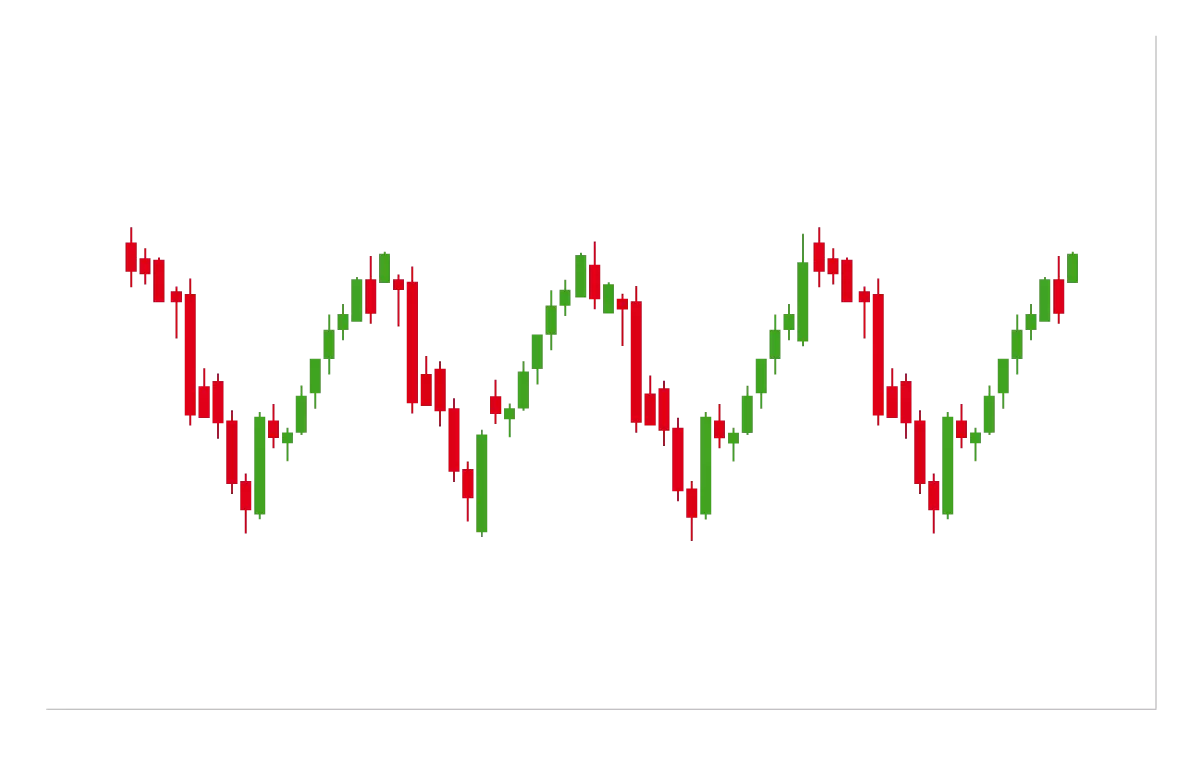
Three top trend indicators
Traders have come up with a variety of ways to identify these primary trends, including looking at price action, but the most common trend trading strategies use technical indicators. Popular trend trading indicators include:
- Moving average
- Relative strength index (RSI)
- Average directional index (ADX)
1. Moving average trend indicator
As the name suggests, a moving average (MA) indicator finds the average price of an asset over a given timeframe. By doing so, it creates a smoothing effect on the price data, producing a single line that can help traders identify trends. There are popular choices, such as the 50-day and 200-day moving averages, but ultimately the choice will depend on the individual.
Moving averages are lagging indicators, which move slower than the market price. This means that MAs cannot be used to predict future trends, but rather, tell you what has happened previously. They are very useful for trend traders, as the direction of a MA can help confirm whether the market is moving up, down or sideways.
When looking at a single moving average, a trader would focus on whether the price is above or below the MA. If the price is above the moving average, it is indicative of an uptrend and if the price is below the moving average, it is an indication of a downtrend.
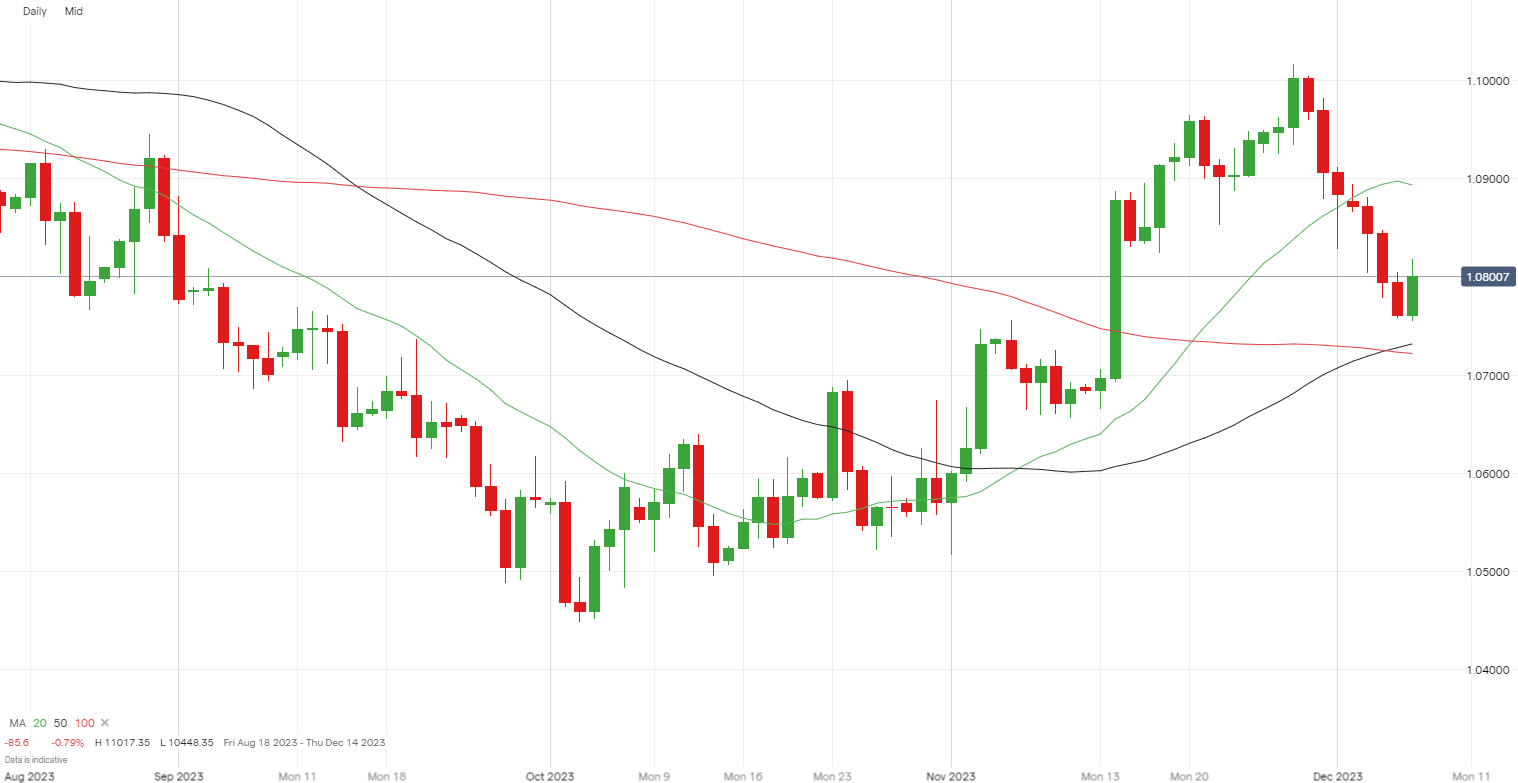
However, a common moving average strategy is to look for crossovers between two moving averages, as this can signal a change in the price direction. Normally, these would be two exponential moving averages (EMA): one fast EMA and one slow EMA.
A trend trader would enter into a long position when the fast EMA crosses the slow EMA from below, and enter a short position when the fast EMA crosses the slow EMA from above.
2. Relative strength index (RSI) trend indicator
The relative strength index (RSI) is used to identify momentum in prices and overbought or oversold signals. It does so by looking at the average gains and losses over a certain number of periods – usually 14 periods – and ascertaining whether more price movements were positive or negative.
The RSI is presented as a percentage, which fluctuates on a scale between zero and 100. When the indicator moves above 70, the market is said to be ‘overbought’, and when it is below 30, the market is considered ‘oversold’. These levels are used by traders as signals that the trend might be reaching its maturity.
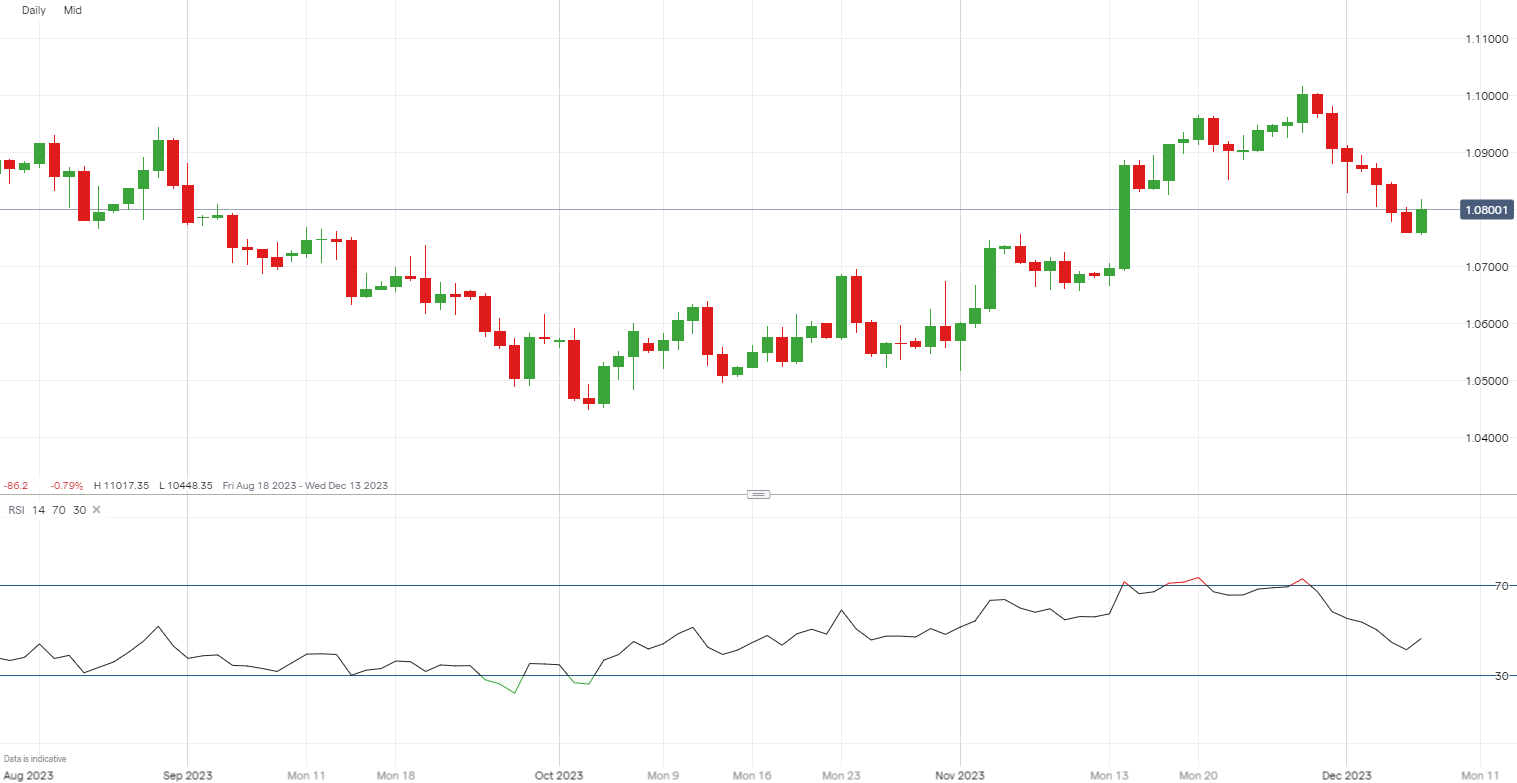
It is worth noting that the market can remain overbought or oversold for extended periods of time. The RSI is not necessarily a signal for an immediate change in trend because although the RSI only fluctuates between zero and 100, the market price can range over a much larger set of values.
Usually though, a trend trader in a long position will use the overbought signal as a price point at which to lock in their profit and exit their trade. While a trader looking to open a short position would use the overbought signal as an entry point. Trend traders utilizing the oversold signal would do the reverse: using the oversold signal as the point at which to exit short trades and open long trades.
3. Average directional index (ADX) trend indicator
The average directional index (ADX) is used by traders to determine the strength of a trend – whether this is up or down. The ADX line fluctuates on a scale from zero to 100. Values from 25 to 100 indicate a strong trend, with the strength increasing as the numbers get higher, while values below 25 indicate a weak trend.
The ADX is often plotted in the same window as the directional movement index (DMI), which is comprised of two other lines: the negative directional indicator (-DI) and the positive directional indicator (+DI). While the ADX line identifies the strength of the trend, the other two lines determine its direction.
If the +DI crosses the -DI while the ADX is above 25, it is seen as a signal that an uptrend is about to start, and traders could consider entering a long position. If the -DI crosses above the +DI while the ADX is above 25, it is a seen as signal that a downtrend is imminent and there is an opportunity to enter a short position.
-09082019.webp)
The above indicators are not going to be 100% accurate at catching every single trend, but they can be used to filter out markets that are not trending, or are trending weakly.
Technical analysis is just one part of a successful trend trading strategy. Without proper preparation and risk management, even the best trading strategy won’t make you money in the long run.
How to start trend trading
- Open an account. You can open an account with tastyfx quickly and easily
- Practice trading on a demo account. Test your trend trading in a risk-free environment with a tastyfx demo account
Here are two other key steps to take before you start trend trading:
Choose a market to trade
When opening a position, it’s important to first have an idea of what you want to trade. While some trend traders might choose to focus on one specific market, others diversify their opportunities by spreading their positions over a range of markets – gaining exposure to more trends.
Once you’ve decided what you want to trade, you’ll need to continue to keep up to date with any developments that could drive new trends, or cause countertrends. These might include breaking news, central bank policy announcements and political events.
Implement a risk management strategy
Most trend traders will utilize both stops and limits to protect their trades. Limit close orders exit a position at a more favorable market price, enabling traders to lock in a profit. While stop-losses will close a position out the market moves against the position by a predetermined amount. As trend reversals can happen at any time, it is vital to have a risk management strategy in place.
Trend trading summed up
- Trend trading is a strategy that involves using technical indicators to identify the direction of market momentum
- Trend trading is usually considered a mid to long-term trading strategy, but it can in theory cover any timeframe, depending on how long the trend lasts
- Trend trading strategies are designed to help you identify trends as early as possible and exit the market before they reverse
- Broadly speaking, there are three types of primary trend: uptrends, downtrends and sideways trends
- The most common trend trading strategies use technical indicators, including moving averages, the relative strength index (RSI) and the average directional index (ADX)
- Without proper preparation and risk management, even the best trading strategy won’t make you money in the long run. It is important to have a plan for which markets you will trade and how you will manage your risk
- The best way to learn about trend trading, and using trend indicators, is to try them out for yourself and see which strategy works best for you. You can practice trading in a risk-free environment with a tastyfx demo account
This information has been prepared by tastyfx, a trading name of tastyfx LLC. This material does not contain a record of our trading prices, or an offer of, or solicitation for, a transaction in any financial instrument. You should not treat any opinion expressed in this material as a specific inducement to make any investment or follow any strategy, but only as an expression of opinion. This material does not consider your investment objectives, financial situation or needs and is not intended as recommendations appropriate for you. No representation or warranty is given as to the accuracy or completeness of the above information. tastyfx accepts no responsibility for any use that may be made of these comments and for any consequences that result. See our Summary Conflicts Policy, available on our website.
